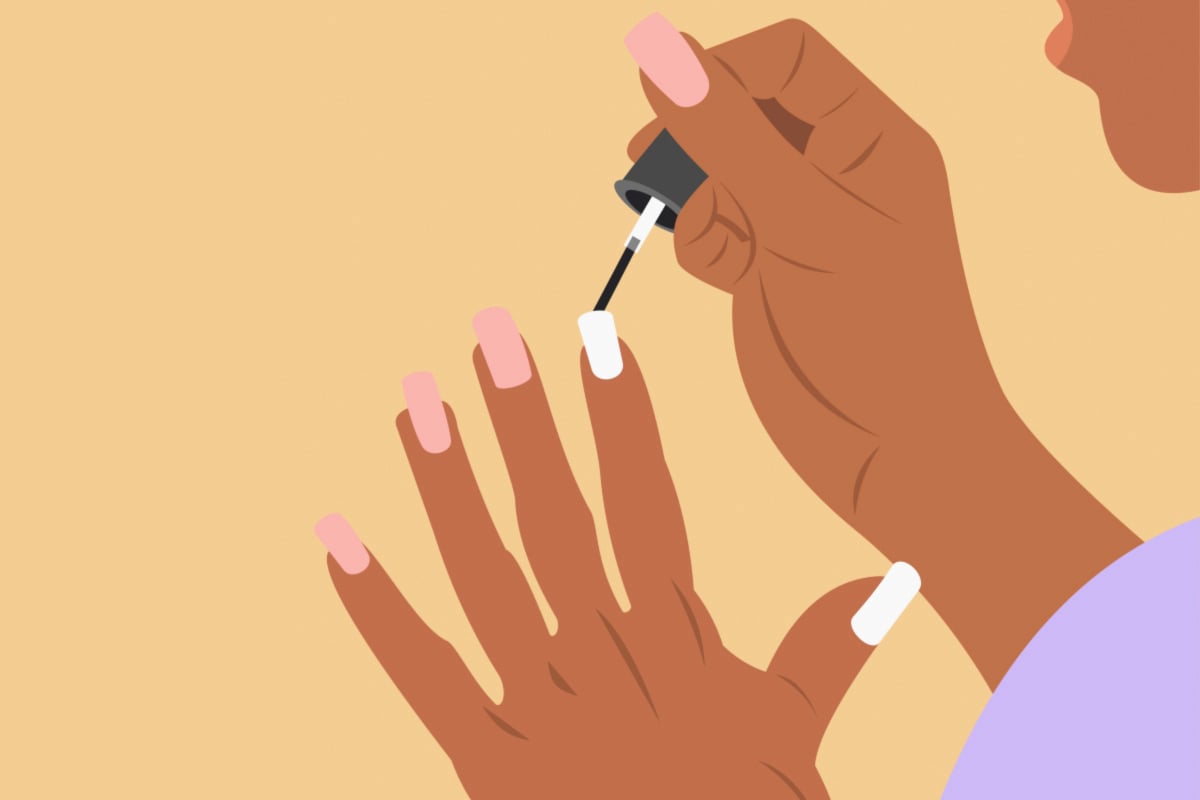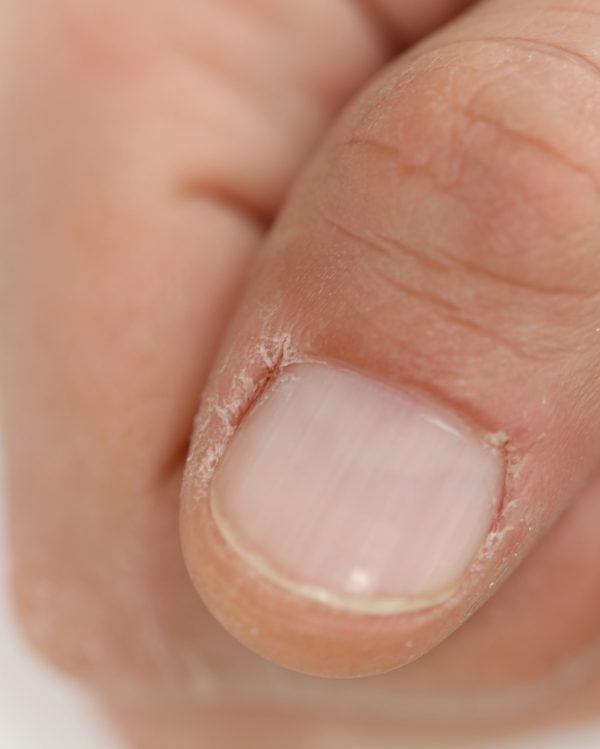
For some, acetone nail polish remover is the big bad wolf of the nail industry.
You know. The bottles of stringent-smelling liquid you soak cotton wool balls in to remove that red toenail polish you’ve been painting over for 6,876,980 years.
Google ‘is acetone bad’ and you’ll find lots of articles talking about the damage acetone polish removers can do to your nails, but when you ask the experts, they’ll tell you there’s no hard science proving acetone nail polish remover is dangerous.
But what actually is acetone, what does it do to your nails and is it safe to use? And if acetone is ‘bad’, are there other ways to remove nail polish, acrylic nails, SNS nails and shellac without it?
To find out, we asked a dermatologist specialising in nail health, and two nail technicians to explain what the fuss is around acetone and if it’s fine to keep using it.
Before we get into it, here’s a (hilarious) glimpse of what life is like with and without nails. Post continues after video.
What is acetone and is it bad for nails? A summary…
- Acetone is a solvent that can be found in nail polish removers.
- Acetone polish remover works by breaking down nail polish and removing it from the nail plate surface.
- Acetone isn’t toxic, but it is dangerous when ingested.
- Exposure to acetone can dehydrate the nail plate, cuticles and the surrounding skin – nails can become dry and brittle, and cuticles can become dry, flaky, red and irritated.
- Non-acetone nail polish removers also contain chemicals and natural nail polish removers require scrubbing to remove polish, which can damage the nails.
- Non-acetone solvent solutions can be used to remove acrylic, gel, shellac and SNS manicures.
- There is no conclusive research to suggest acetone is harmful or toxic – it is the most effective nail polish remover currently on the market.
- Infections from poor salon hygiene, allergic contact dermatitis and UV lamps are all more concerning nail issues than acetone nail polish remover.
What is acetone/what is acetone polish remover?
“Acetone, also known as propanone, is a colourless, flammable liquid. It’s a solvent (dissolves substances) and is used in the manufacturing of plastics, household products, cosmetic and personal care products,” Sinclair Dermatology’s Dr Samantha Eisman told Mamamia.


Top Comments
“Natural nail polish removers = free from chemicals”, well that’s just incorrect. Everything is made up of chemicals, water is a chemical. You can say acetone free, or free of harsh chemicals, or all natural, but nothing is chemical free. And nail polish remover with acetone is handy to have in the house if you ever glue your fingers together with superglue. (And yes, I know this from personal experience!)